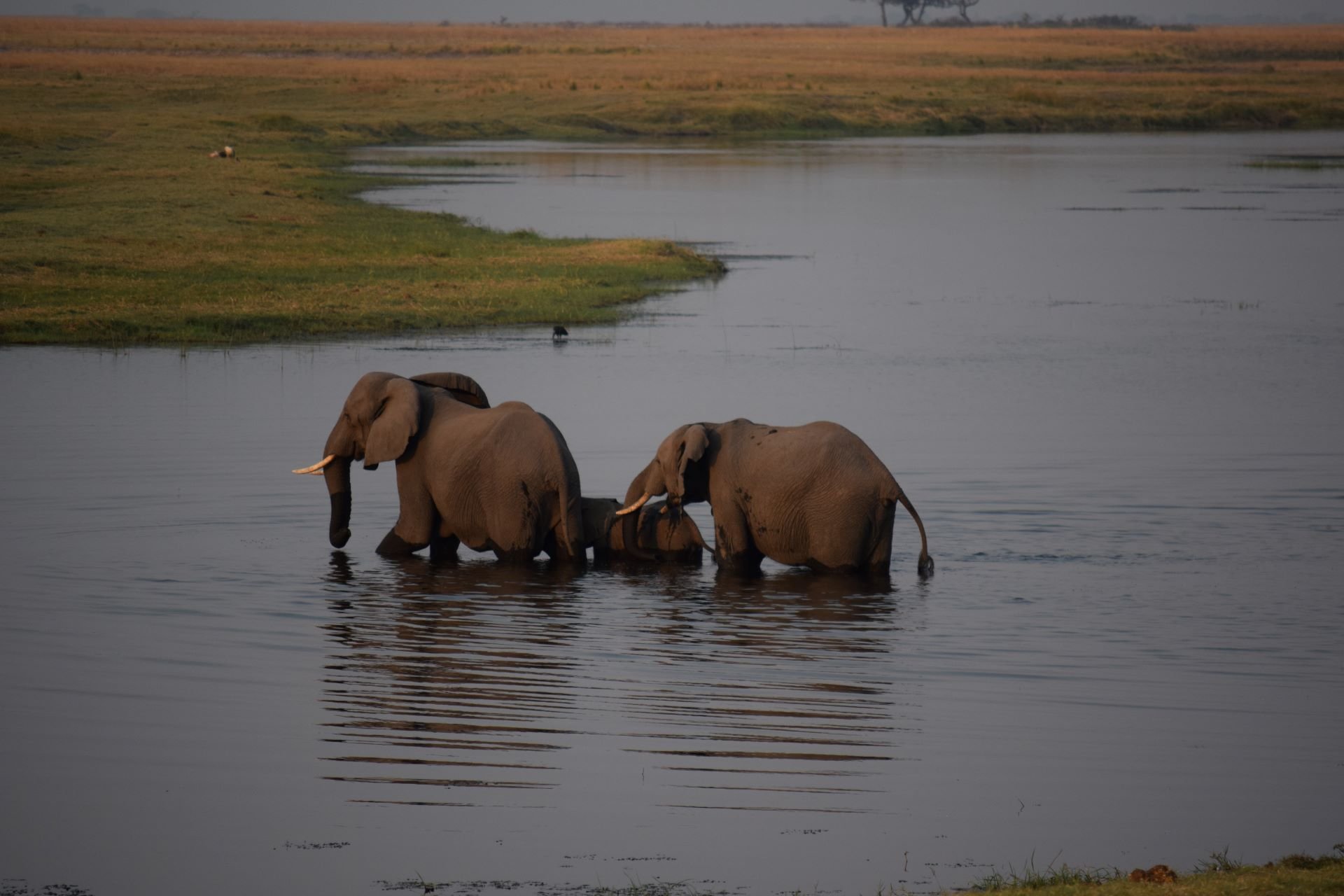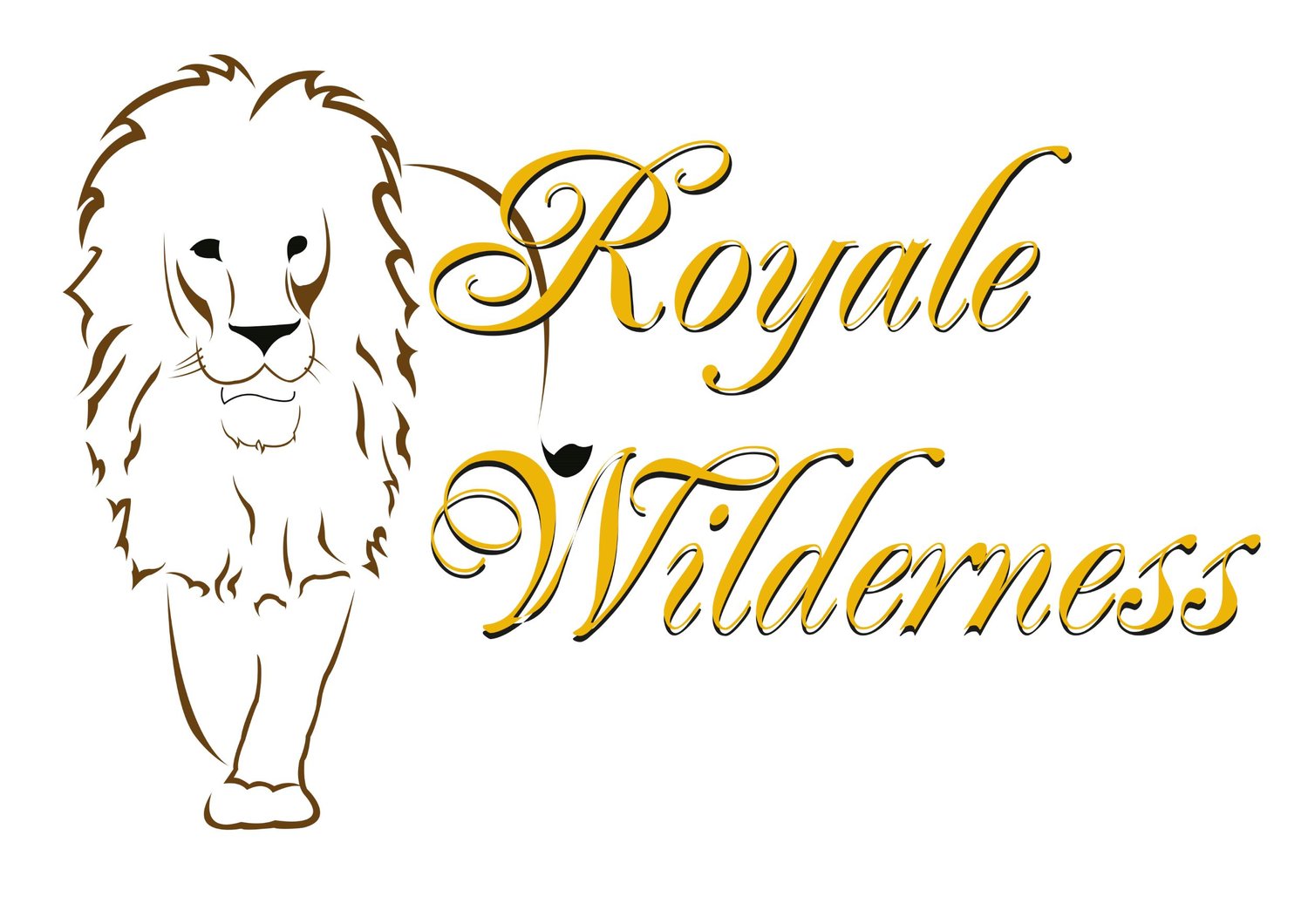
Chobe National Park
The Chobe National Park covers about 11,700km² of northern Botswana. In the South, it borders Moremi Game Reserve while to the North and the North West; it borders the Chobe River and the Caprivi Strip of Namibia. Much of it is impenetrable Teak forest and thorn bush growing on deep sand. Like Moremi Game Reserve, Chobe was big game hunting ground. The idea of conserving this part of the Chobe area is much older, going back to the 1930s. However, it is only in 1967 that Chobe National Park was finally proclaimed.
The Chobe National Park has four distinct geographical areas of interest. We will only cover 3 that our safaris go to. These are:
Serondela area (Chobe river front area)
This area lies north along the Chobe River, bordering the Caprivi Strip. The protected area itself has only the Chobe River as the only source of water, for the wildlife that lives here. During the summer rains, most of the wildlife disperses further into the Teak woodland. But in the drier months they return to the river where they will wait out the drier months before the rains return. At this time, the grazing along the river becomes the soul of the wildlife as it is the only food that would remain to sustain the life of the wildlife here, resulting in the biggest concentration of Elephants and Buffalo, not seen anywhere on the planet. This is also the only place in Botswana where one can see PUKU.
Savuti
Savuti lies to the South West part of Chobe National Park. The story of this area revolves around a river that seems to flow and disappear without any regard to time frames or period. The sea saw movement of the wildlife here, revolves along this mysterious river patterns.
When it flows, the Savute River, brings so much life to Savuti, you would imagine that you are in paradise itself. Herds of Elephant and Buffalo are resident here throughout the season, and they litter the Savuti marsh with recklessness, mingling with other species like Wildebeest, Zebra, Giraffe and Impala at ease.
The inconsistency of the river flow has also created behavior not consistent with wildlife elsewhere. Here, the Lions hunt Elephants. As breeding herds arrive at the water after many hours of trekking through the Mopane, they are often greeted by waiting Lions. Savuti is the amphitheater where this interaction of Lions and Elephants has played itself out so brutally, for decades, in a bitter struggle for survival. Film makers, Dereck and Beverly Joubert and lately Brad Besterlink have captured some of the most dramatic of these scenes in their documentaries about Savuti.
Nogatshaa and Chinga
To the east are Nogatshaa and Chinga. These areas have better game distribution during the wet summer months, with rain filled Pans providing the much needed sustenance for the wildlife. The Mopane woodland and the Mixed Combretum veld makes the area rather challenging to find much of the wildlife.
It is in the drier winter months that game congregates at the manmade waterholes, that this area becomes interesting. One can spend hours and hours in the Hides near the waterholes and enjoy a plethora of wildlife species coming for a drink.
Best time to visit
Throughout the year: Wildlife viewing is generally better in the dry months (March to November), when there are concentrations of wildlife along the permanent rivers and waterholes. The vegetation is thinner, and temperatures being higher later in that period, driving the wildlife to a permanent residence along the rivers.
Our Safaris in Chobe National Park
Pioneer: 2 nights Savuti, 2 nights Serondela.
Explorer: 3 nights Savuti 2 nights Serondela.
Last frontier: 3 nights Savuti 2 nights Serondela.

